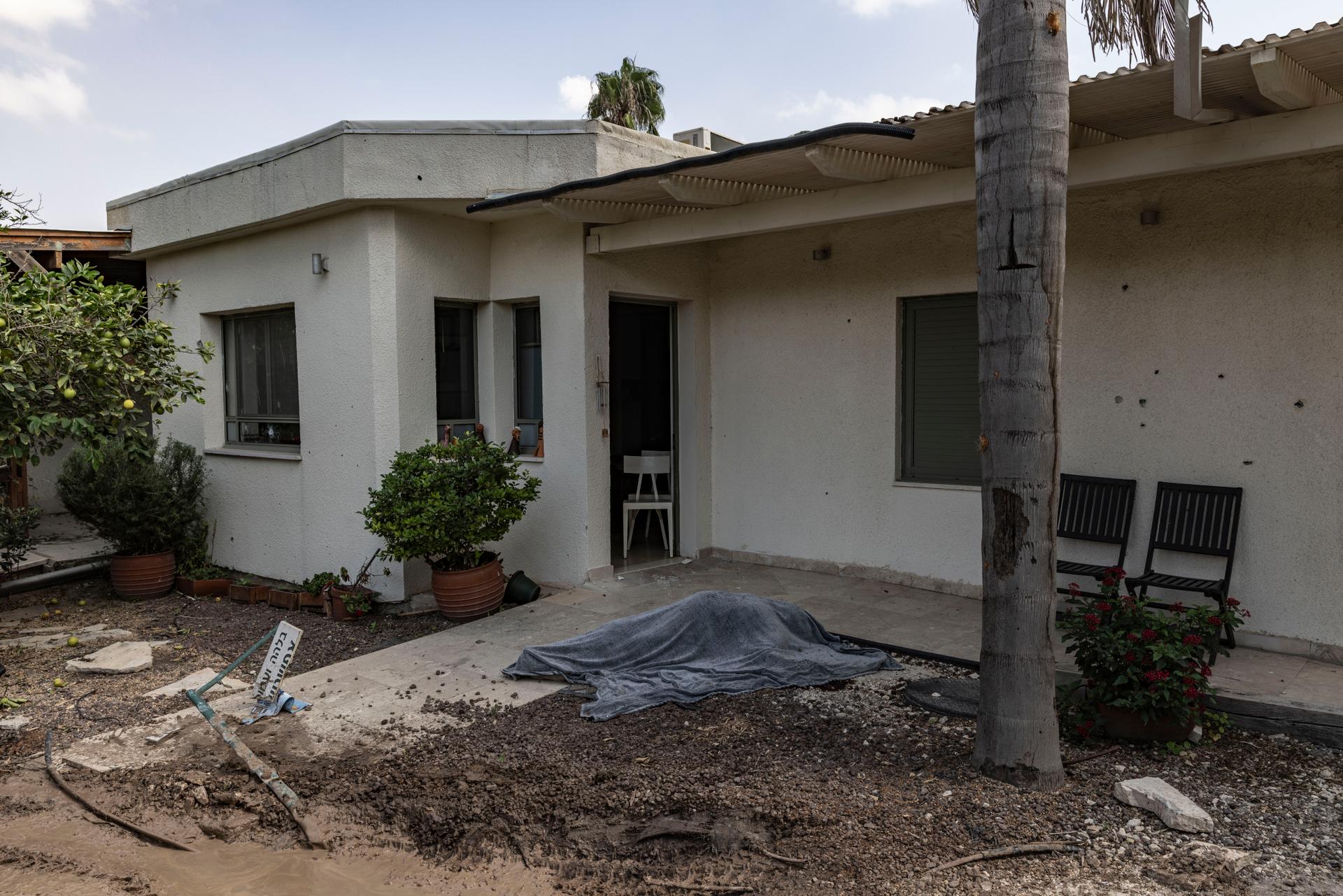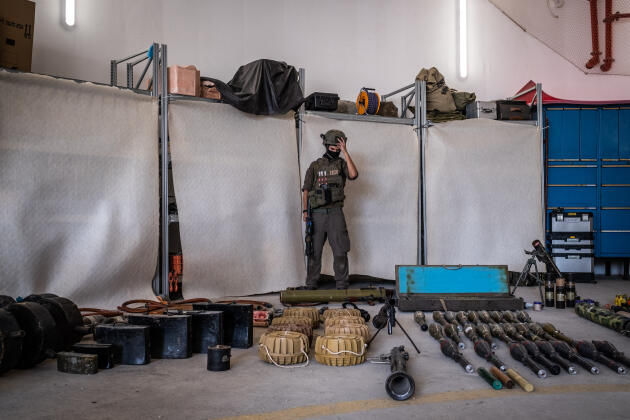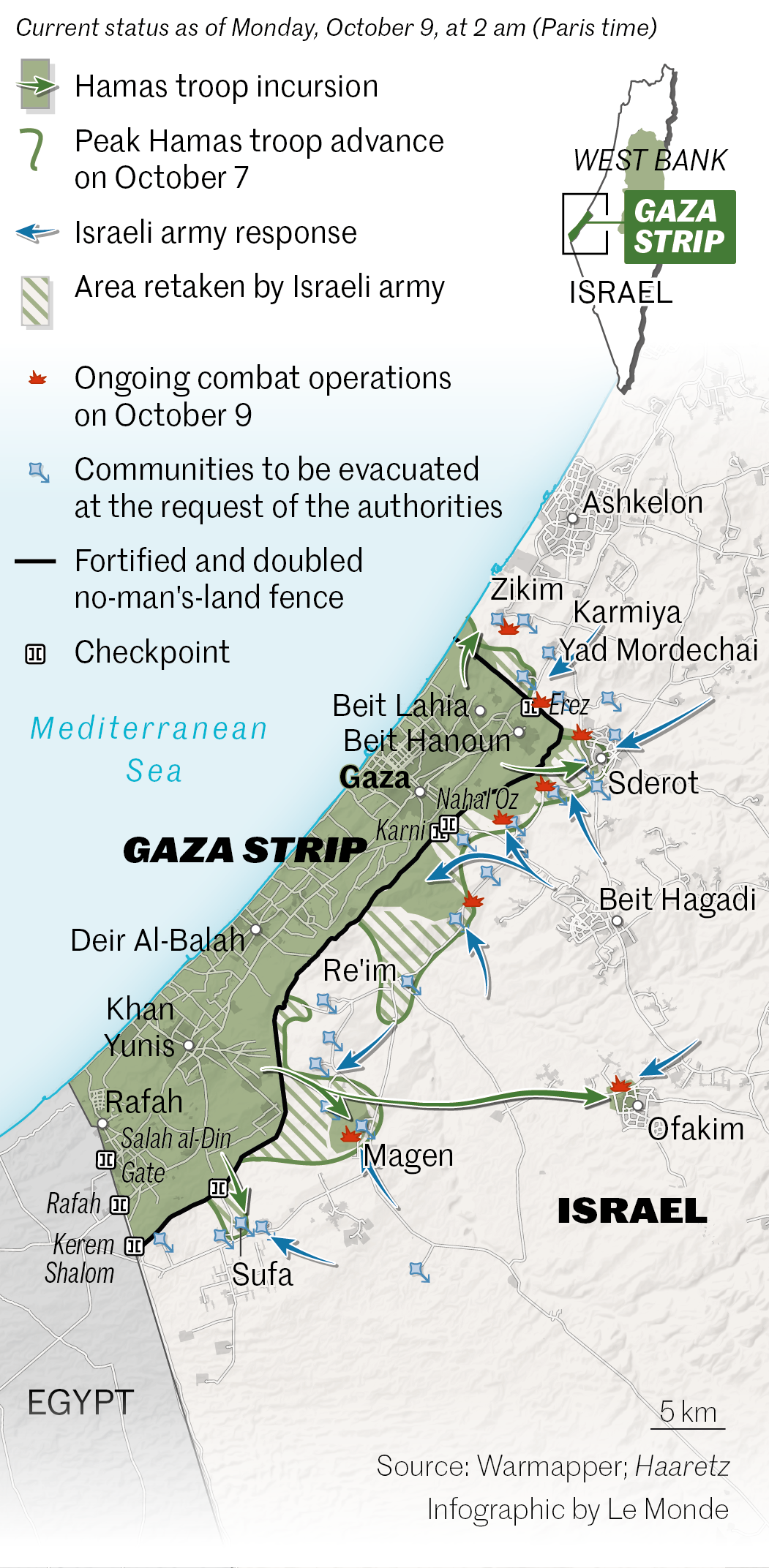


Hamas attack: October 7, a day of hell on earth in Israel
Long ReadThree weeks after the most ambitious assault in the history of the Islamist movement, the modus operandi of what happened that day is becoming clearer. More than 2,000 men entered Israeli territory through 29 breaches in the barrier surrounding the Gaza Strip. The invasion, a military success, led to atrocities committed against civilians.
Yifat Ben Shoshan woke up early on October 7. It wasn't even 6:30 am. Her husband, standing next to her, said: "I should have gotten up earlier, to go to the gym." She said: "Come on, have a coffee with me." It was a special day – Simchat Torah, which concludes the Jewish holiday of Sukkot.
This 53-year-old woman lives in Netiv Haasara. This moshav – a farming community – of 900 inhabitants is located 400 meters from the Gaza Strip. It's right up against the barrier that encloses the enclave. It's so close that every morning, when she gets up, she says, "Good morning, Beit Lahia." Just 400 meters away, after sandy fields and food crops, the first low-rise houses, topped with minarets, can be seen in the northernmost town in the Palestinian territory.
But this morning, Ben Shoshan didn't even have time to walk around the bed when she saw rockets climbing into the sky. She cried out, "Take cover!" as the first sirens sounded. She and her husband and son took cover in the shelter of their brand-new house, which had only been completed two years ago. This was no mere salvo. It was a barrage of thousands of projectiles being sent from Gaza all over Israeli territory, including Jerusalem. Her phone received a few alerts from a specialized application. Then the following message appeared: "Lock yourself in your shelters, there are terrorists in Netiv Haasara." Shortly afterwards, the electricity and cellular network were cut off. Without power, it was impossible to close the metal shutters.
The most ambitious attack in Hamas history began. The Palestinian militant group neutralized the automatic machine guns and surveillance antennae that lined the Gaza fence, using explosives dropped from small, slow-flying, hard-to-detect drones. In recent years, Israel has developed an underground defense system to prevent Hamas from digging tunnels under the fence. Hamas was now going over the top.


In a matter of minutes, the Israeli army had been deafened and blinded on one of its most dangerous flanks. The Gaza Strip, subjected to a double Israeli-Egyptian blockade since Hamas seized the enclave in 2007, is a suffocated territory, one of the densest in the world, with unemployment rates approaching 50%. The Palestinian organization – considered terrorist by Israel, the European Union and the United States – rules the territory with an iron fist.
But its position is as precarious as ever. The era of the Arab revolutions, which had seemed to benefit the Muslim Brotherhood, from which Hamas emerged, is over. Hamas had resolved to rejoin the Iranian-led "axis of resistance," alongside Syria and Hezbollah. The normalization negotiations between Israel and Saudi Arabia, in which the Palestinian Authority was taking part, were further isolating it. Hamas was the absolute master of Gaza. But it couldn't get out – except by force.
You have 85% of this article left to read. The rest is for subscribers only.

